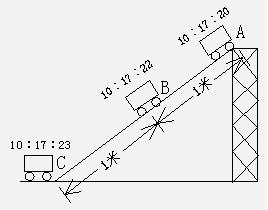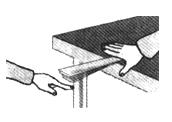
科目: 来源: 题型:


查看答案和解析>>
科目: 来源: 题型:

查看答案和解析>>
科目: 来源: 题型:阅读理解
| A.babies’ sense of sight | B.effects of experiments on babies |
| C.babies’ understanding of objects | D.different tests on babies’ feelings |
| A.still exists | B.keeps its shape | C.still stays solid | D.is beyond reach |
| A.A chair | B.A screen | C.A film | D.A box |
| A.The babies didn’t have a sense of direction. |
| B.The older babies preferred toy trains to balls. |
| C.The younger babies liked looking for missing objects |
| D.The babies couldn’t tell a ball from its optical illusion. |
查看答案和解析>>
科目: 来源: 题型:阅读理解
| A.babies’ sense of sight | B.effects of experiments on babies |
| C.babies’ understanding of objects | D.different tests on babies’ feelings |
| A.still exists | B.keeps its shape | C.still stays solid | D.is beyond reach |
| A.A chair | B.A screen | C.A film | D.A box |
| A.The babies didn’t have a sense of direction. |
| B.The older babies preferred toy trains to balls. |
| C.The younger babies liked looking for missing objects |
| D.The babies couldn’t tell a ball from its optical illusion. |
查看答案和解析>>
科目: 来源: 题型:阅读理解
| A.babies’ sense of sight | B.effects of experiments on babies |
| C.babies’ understanding of objects | D.different tests on babies’ feelings |
| A.still exists | B.keeps its shape | C.still stays solid | D.is beyond reach |
| A.A chair | B.A screen | C.A film | D.A box |
| A.The babies didn’t have a sense of direction. |
| B.The older babies preferred toy trains to balls. |
| C.The younger babies liked looking for missing objects |
| D.The babies couldn’t tell a ball from its optical illusion. |
查看答案和解析>>
科目: 来源: 题型:
查看答案和解析>>
科目: 来源: 题型:
查看答案和解析>>
科目: 来源: 题型:
查看答案和解析>>
湖北省互联网违法和不良信息举报平台 | 网上有害信息举报专区 | 电信诈骗举报专区 | 涉历史虚无主义有害信息举报专区 | 涉企侵权举报专区
违法和不良信息举报电话:027-86699610 举报邮箱:58377363@163.com